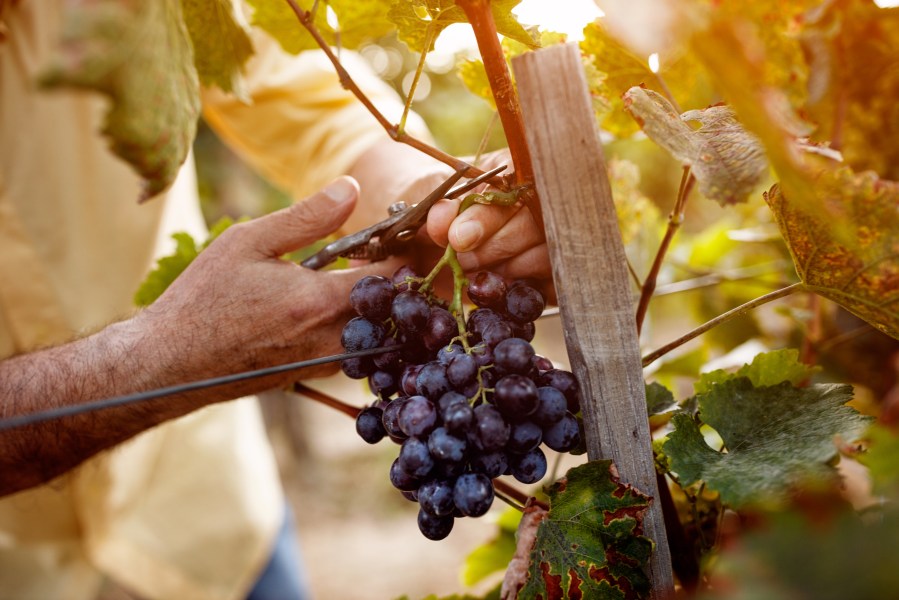With picking in full swing, Hutchinsons agronomists Rob Saunders and Chris Cooper look at how crops have fared after a record-breaking summer and explain how to start optimising next year’s potential.
2022 is shaping up to be a good season for winemakers, as vines in many regions made the most of summer conditions that were more akin to continental Europe than maritime Britain.
Provisional Met Office figures suggest the UK experienced its fifth warmest August since 1884, and the fourth sunniest in more than 100 years, at 128% of average.
This hastened ripening in many areas, resulting in an earlier start to picking than has been experienced for a few years. Yield and quality look promising. Yields per vine may not be quite up to the 2018 vintage, when the UK produced 12 million bottles, and although bunch numbers on many sites are down from 2018, this appears to be somewhat compensated for by heavier bunch weights.
Sugar contents are up on the corresponding dates last year, giving Pinot and Chardonnay growers the option to make still wines, if they are brave enough to leave the grapes hanging for a few extra weeks.
It’s not all plain sailing though. Younger vines, and those where roots have not fully established, suffered more in the dry spring and summer, particularly where weed control was poor, or on heavier-bodied clay soils, which experienced considerable cracking, inhibiting the growth of feeding roots.
Powdery mildew pressure was also quite high in mid to late July, exposing any gaps in spray programmes. Additionally, heavy rain earlier in September added to bunch weights, but also caused splitting in some bigger bunches, and inevitably increased botrytis bunch rot pressure.
Botrytis control options so close to harvest are essentially limited to bio control products, such as Botector (which is in short supply), Amylo-X, Serenade, or Taegro.
While most crops started ripening earlier this year, there were some areas that were not as advanced as expected, and in a few cases bunch number and size has been below expectations. This may be a legacy of disease and/or the dull, damp conditions during the critical flower initiation period last year (a topic we covered in the July issue).
Building blocks for 2023
With crops generally producing good yields this season, there will have been a relatively high demand on nutrients, so it is well worth taking the opportunity to give something back by applying foliar nutrition before leaves start senescing.
This is not always possible in the UK, given the narrow window between picking and the autumn weather closing in, but the earlier harvest in many areas does offer an opportunity to do so this season – providing conditions allow of course.
As long as leaves are green and photosynthesising, they will be able to take up nutrients and continue building the carbohydrate and mineral reserves that are essential for supporting vines through the dormant period, improving winter hardiness, and fuelling strong new growth next spring.
Conditions for flower initiation during June and July 2022 were generally very good, which bodes well for next year’s crop potential.
Avoid applying too much nitrogen at this time, as this encourages soft, sappy growth that will be more prone to winter damage. Focus on applying products that supply magnesium, calcium, and micronutrients, particularly boron and zinc to build up bud reserves ready for the spring.
Regular soil testing provides a useful benchmark to monitor changes in nutritional status, and may be especially useful for highlighting underlying issues on areas that have underperformed in terms of yield or grape quality this year.
Areas where the soil is thinner, or where roots are not as well established, have been more apparent this year, and may warrant special attention. Don’t ignore isolated pockets, as they will drag your averages down.
Think about targeted nutrient applications, or, where soil structure is the underlying cause, look to apply organic mulches, or sow cover crops to build organic matter, which in turn helps with water retention and nutrient cycling.




